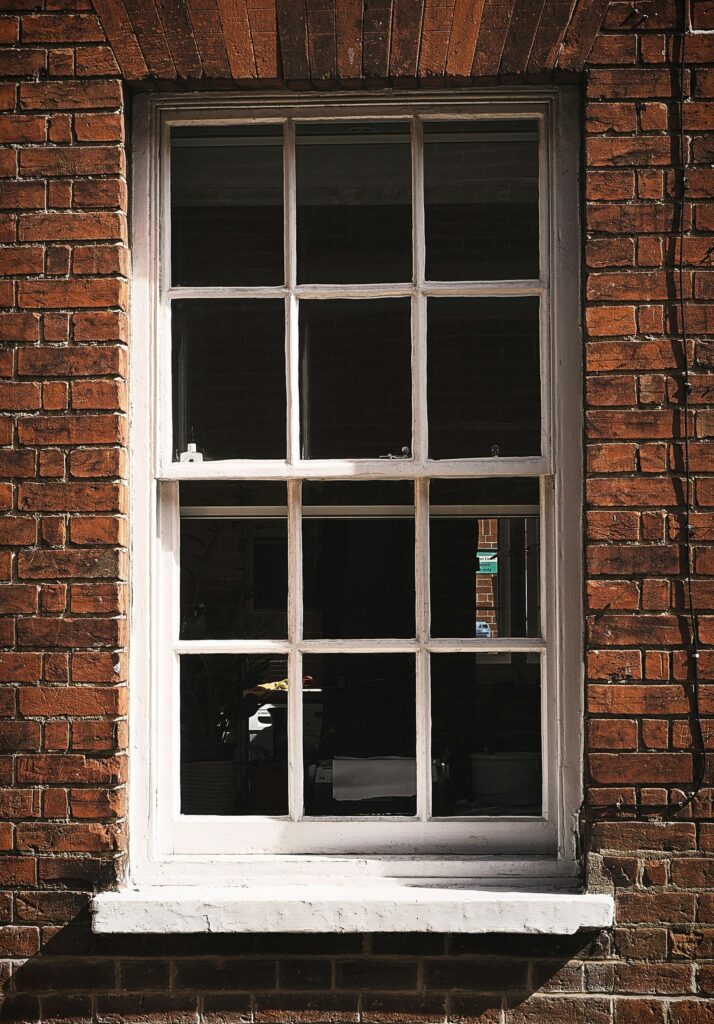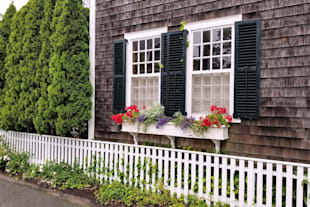What is the Difference Between Sash and Casement Windows?
Essential Insights for Homeowners
When choosing windows for your home, you might wonder what sets sash windows apart from casement windows. The main difference is how they open and close. Sash windows slide up and down or side to side, while casement windows open outwards like a door, hinged at the side.
Sash windows have a timeless look, often found in older, traditional homes. They provide a classic charm that many homeowners love. Casement windows, on the other hand, offer a more modern appeal and allow for better ventilation since they can open fully.
Each type of window has its own set of advantages. Sash windows are great for adding historical character to a home. Casement windows are perfect for letting in lots of fresh air. Deciding between the two often comes down to personal preference and the architectural style of your home.

Historical Context and Evolution
Sash and casement windows have evolved over centuries, reflecting architectural trends and technological advancements. These changes shaped the windows we see in Georgian, Victorian, Edwardian, and modern homes.
Georgian Era Innovations
The Georgian era (1714-1830) saw the popularity of sash windows. They featured large panes and thin glazing bars, allowing more light to enter. The double-hung sash, where both sashes could move, became common. This design improved ventilation. Georgian sash windows are known for their symmetry and classic proportions, often seen in period properties.
The Victorian Sash: A Symbol of an Era
Victorian sash windows (1837-1901) saw several changes. They often had larger panes compared to Georgian styles. Victorian sashes might include ornate horns and more elaborate detailing. Innovations in glass manufacturing during this time allowed for clearer, larger panes, enhancing the aesthetic appeal in traditional properties.
Edwardian Sash and Casement Modifications
During the Edwardian period (1901-1910), there was a shift towards combining sash and casement windows. Edwardian homes often featured tall, slimmer sashes with elegant glazing bars. Casement windows, with hinges on the side, also became popular for better ventilation. The blend of styles reflected a move towards lighter, more open interiors in period properties.
From Tudor to Modern Homes: Adaptations Over Centuries
Tudor homes (1485–1603) originally featured small, leaded casement windows. These were often diamond-shaped panes held by lead strips. Over time, both sash and casement windows adapted to fit various architectural styles. In modern homes, these traditional designs are preserved for their aesthetic value while incorporating new materials like uPVC for improved insulation and ease of maintenance.
Design Features and Operation
When examining the design and functionality of sash and casement windows, one can see distinct differences. These differences influence how the windows operate and the benefits they offer.
The Mechanics of Sash Windows
Sash windows are notable for their traditional look and operation. They slide vertically using a system of pulleys and weights. Each sash can be lifted or lowered independently to control the airflow.
This sliding mechanism relies on cords or chains running over pulleys, making them both versatile and easy to operate. Locks are usually fitted to ensure security. Sash windows are particularly beneficial in terms of ventilation, as they can open at both the top and bottom, allowing warm air out and cool air in.
Casement Window Functionality
Casement windows hinge from the side and swing open like a door. This design allows them to open fully, offering maximum ventilation. Typically, they are cranked open with a handle, which can be easier to use than sliding sashes.
These windows often have a more modern look and are known for their excellent seals against weather, thanks to the way they close against the frame. Locks are placed on the frames to add security.
Comparing Window Opening Styles: Inwards vs Outwards
Sash windows slide up and down within the frame, meaning they don’t swing in or out. This can be useful in tight spaces.
Casement windows, on the other hand, swing open either inwards or outwards. Inwards openings are easier to clean from the inside, while outwards openings don’t take up indoor space. Each style has its advantages depending on the room and preference for space utilisation.
Understanding these differences can guide better choices for home design and functionality.

Material Choices and Aesthetics
When choosing between sash and casement windows, materials and look are crucial. They affect durability, maintenance, and the overall style of your home.
Wooden Sash and Casement Windows: A Timeless Choice
Wooden sash windows offer a classic, warm look. Made from timber, they can be tailored to fit Georgian, Victorian, and Edwardian styles. The natural grain of wood adds a touch of elegance not found in other materials.
Timber sash windows need regular upkeep like painting and sealing to prevent rot. Wood can last for decades if cared for properly. These windows are often preferred in conservation areas for their authentic appearance.
UPVC Alternatives: Modern and Low Maintenance
UPVC sash windows are a modern option known for being easy to care for. They don’t need painting or sealing and are resistant to rot and corrosion. These windows can mimic the appearance of wood but lack the same rich texture.
UPVC windows are also energy efficient, often featuring double-glazed glass which helps in thermal insulation. Although they deviate from authentic wooden aesthetics, they offer practicality and durability for contemporary homes.
Glass and Glazing Options
Glass choices significantly impact window performance. Double-glazed glass is common, providing better insulation compared to single glazing. Some windows use multiple layers of glass with an inert gas between them for even more efficiency.
Different glazing options can also affect the look. Clear glass offers a traditional view, while frosted or stained glass can add privacy and style.
Authenticity and Visual Appeal in Architecture
Authenticity in window design is key, especially for period properties. Timber sash windows often relate to historical authenticity. Their georgian sash, victorian sash, or edwardian sash styles keep a home true to its architectural roots.
UPVC sash windows can look somewhat similar, but experts often notice the difference. For those focused on maintaining a period-appropriate look, wood remains the authentic choice. Meanwhile, modern homes may benefit from the sleek lines and minimal upkeep of UPVC.
Practical Considerations
When choosing between sash and casement windows, one must think about security, maintenance, and energy efficiency. Each type of window offers distinct benefits and drawbacks, making it essential to weigh these factors carefully.
Security and Locking Mechanisms
Security is crucial when selecting windows for a home. Sash windows usually come with basic locking mechanisms and sliding mechanisms but can be less secure if not properly maintained. Over time, the sliding sash can loosen, making them easier to force open. Adding modern locking solutions, like multi-point locking, can significantly improve security.
Casement windows tend to be more secure due to their design. They open outwards, making it more difficult for intruders to gain access. These windows often feature multi-point locking systems, which enhance security by locking at several points along the frame. Hinges on casement windows also play a role in security, as they are less prone to wear and tear compared to sash windows.
Maintenance and Upkeep
Maintenance is another key factor to consider. Sash windows often require more attention. The sliding mechanism needs regular repair and replacement of worn-out parts. Draught proofing can be challenging, adding to upkeep tasks. Wooden sash windows will also need regular painting or varnishing to keep them weatherproof.
Casement windows, on the other hand, are considered low maintenance. There are fewer moving parts, and modern materials like uPVC or aluminium can reduce the need for regular care. Hinges and locking mechanisms may need occasional lubrication, but the upkeep is relatively straightforward compared to sash windows.
Energy Efficiency and Insulation
Energy efficiency is essential for reducing heating bills and ensuring comfort. Sash windows may struggle with thermal efficiency due to the potential for gaps between the sliding sections. Although modern sash windows come with improved draught proofing and double glazing, they may still lag behind casement windows.
Casement windows excel in energy efficiency and insulation. They close snugly against the frame, reducing the chances of draughts. With double glazing or even triple glazing, they provide excellent thermal efficiency. This makes them a better choice for homes aiming to be more energy efficient.
Installation and Compatibility
The choice between sash and casement windows affects installation, compatibility with different property styles, and design preferences. Consider various factors like ease of fitting, suitability for conservation areas, and whether a property is modern or period.
Integrating Windows in New Builds and Conservation Areas
For new builds, both sash and casement windows can be installed with straightforward methods. Casement windows may have a simpler installation process due to their hinges and frame structure. Sash windows might require skilled craftsmanship, especially if they are traditional timber sash.
In conservation areas, sash windows are often preferred because they maintain historical accuracy. Local regulations may enforce the use of sash windows to preserve the exterior appearance. When installing in these areas, ensuring the windows match the existing style is crucial.
Choosing Windows for Period vs Modern Properties
Period properties often benefit from the classic look of sash windows, which align with the traditional aesthetic. These windows can be made energy-efficient with modern materials while keeping the historic charm.
Casement windows, on the other hand, suit modern designs. Their sleek and simple design fits well with contemporary homes and offers excellent energy efficiency when double or triple glazed. The choice should balance aesthetics and practical considerations like maintenance and ease of operation.
Personal Preference and Market Availability
Personal preference plays a significant role in choosing between sash and casement windows. Some homeowners might prefer the elegant look of sash windows, appreciating their historical appeal. Others might choose casement windows for their functionality and modern appearance.
Market availability also impacts the decision. Casement windows are widely available in various materials, colours, and finishes. Sash windows, while available, may have fewer options due to their specialised design and the expertise required for installation.
Ultimately the choice between sash and casement windows depends on installation processes, property type, and personal preferences so knowing the Difference Between Sash and Casement Windows is essential. Conservation areas may restrict choices, favouring sash windows for historical consistency. For modern builds, casement windows might be preferred for their simplicity and energy efficiency. Market factors also play a role in the accessibility of different window styles.
So now you know the Difference Between Sash and Casement Windows, you just need to decide which type suits your particular needs.
